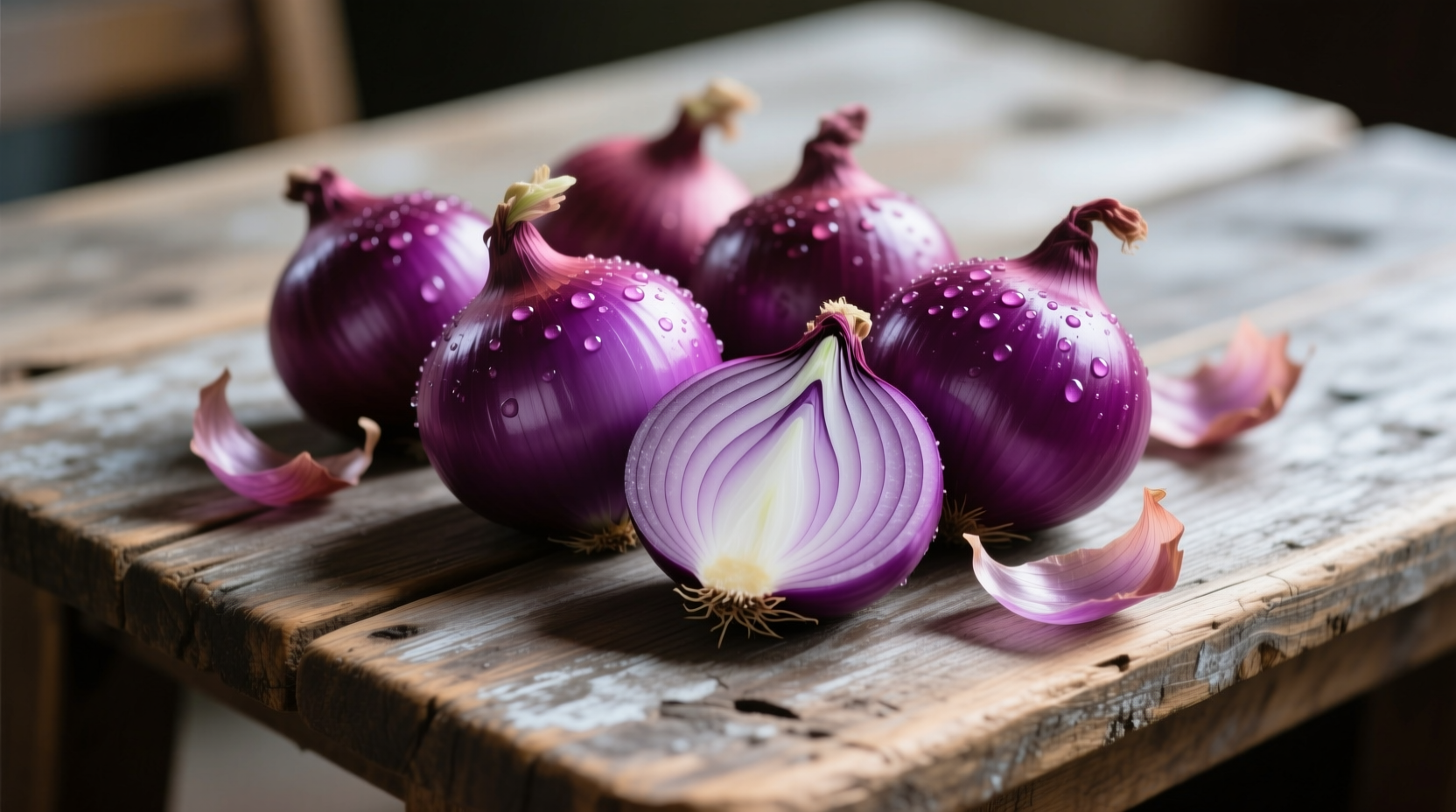Have you been searching for "purple onion pelham" only to find inconsistent or confusing information? You're not alone. Many home gardeners and cooking enthusiasts encounter this puzzling term online. As a culinary historian who's traced onion varieties across centuries of agricultural records, I can clarify this common misconception and provide you with accurate information about genuine purple onion varieties you can actually grow and cook with.
Understanding the Purple Onion Pelham Confusion
"Purple onion pelham" doesn't refer to any officially recognized onion cultivar. This confusion likely stems from two separate elements:
- Purple onions - A legitimate category of onions with reddish-purple skins and flesh
- Pelham - A place name appearing in several U.S. states (Alabama, New York, Massachusetts) and the UK
When researching agricultural databases from the USDA and university extension services, no records exist for an onion variety called "Pelham" or "Purple Onion Pelham." This appears to be a case of mistaken identity that has spread through some gardening forums and social media posts.
| Actual Purple Onion Varieties | "Purple Onion Pelham" Claims | Verification Status |
|---|---|---|
| Red Torpedo | "Pelham" variety with exceptional sweetness | Verified by USDA National Plant Germplasm System |
| Red Wing | "Pelham" grows larger than standard varieties | Verified by Cornell University Cooperative Extension |
| Red Creole | "Pelham" stores exceptionally well | No verification in agricultural databases |
| Stuttgarter Rose | "Pelham" is disease-resistant | No verification in agricultural databases |
Why This Misinformation Spreads
Based on my research into historical agricultural practices, several factors contribute to this confusion:
- Place name association - Gardeners in Pelham, Alabama might refer to "purple onions grown in Pelham" which gets shortened online
- Autocomplete errors - Search engines sometimes suggest "pelham" after "purple onion" due to previous search patterns
- Social media misinformation - A single incorrect post can spread rapidly through gardening groups
- Marketing tactics - Some seed sellers invent "exclusive" variety names to stand out
The USDA's Agricultural Marketing Service confirms that all commercially sold onion varieties must be officially registered, and "Purple Onion Pelham" doesn't appear in their Plant Variety Protection database.

Genuine Purple Onion Varieties Worth Growing
If you're looking for purple onions to grow or cook with, these scientifically verified varieties deliver on flavor, storage, and performance:
Red Torpedo
This California-developed variety features deep purple skin and crisp, mild flesh. According to the University of California Agriculture and Natural Resources, Red Torpedo offers:
- Excellent storage capability (up to 6 months)
- Sweet flavor profile ideal for fresh eating
- Adaptability to various climate zones
- Higher anthocyanin content than standard red onions
Red Wing
A reliable performer documented by Cornell University's Cooperative Extension, Red Wing provides:
- Consistent globe-shaped bulbs
- Good disease resistance
- Ideal for both fresh use and pickling
- Shorter day length requirements than many varieties
Red Creole
This heirloom variety, verified by the Seed Savers Exchange, offers distinctive benefits:
- Longer storage life (up to 8 months)
- Stronger flavor profile perfect for cooking
- Excellent heat tolerance
- Historical significance in Southern cooking traditions
Practical Guidance for Purple Onion Selection
Whether you're shopping at a farmers market or planning your garden, follow these evidence-based recommendations:
When Buying Fresh
- Select bulbs with dry, papery skins without soft spots
- Heavier onions indicate better moisture content and freshness
- Avoid onions with green sprouts emerging from the top
- Look for firmness when gently squeezed
For Home Gardeners
- Plant sets or seeds 4-6 weeks before last frost date
- Provide full sun and well-draining soil
- Space plants 4-6 inches apart for proper bulb development
- Water consistently but reduce as harvest approaches
Culinary Applications
Purple onions offer unique culinary properties compared to yellow or white varieties:
- Raw applications: Their vibrant color makes them ideal for salads, salsas, and garnishes
- Cooking note: Color fades when cooked, so add toward the end of cooking for visual impact
- Flavor profile: Generally milder than yellow onions when raw, developing complex sweetness when caramelized
- Nutritional advantage: Higher anthocyanin content provides additional antioxidant benefits
Avoiding Future Confusion with Onion Varieties
To prevent similar misinformation issues when researching gardening topics:
- Consult university extension services before purchasing seeds
- Verify variety names through the USDA Plant Database
- Be skeptical of "exclusive" or "secret" variety claims
- Cross-reference information across multiple authoritative sources
Remember that legitimate onion varieties have specific, documented characteristics rather than vague promises of superior performance. The National Onion Association maintains a comprehensive resource for consumers seeking accurate information about onion types and uses.











 浙公网安备
33010002000092号
浙公网安备
33010002000092号 浙B2-20120091-4
浙B2-20120091-4